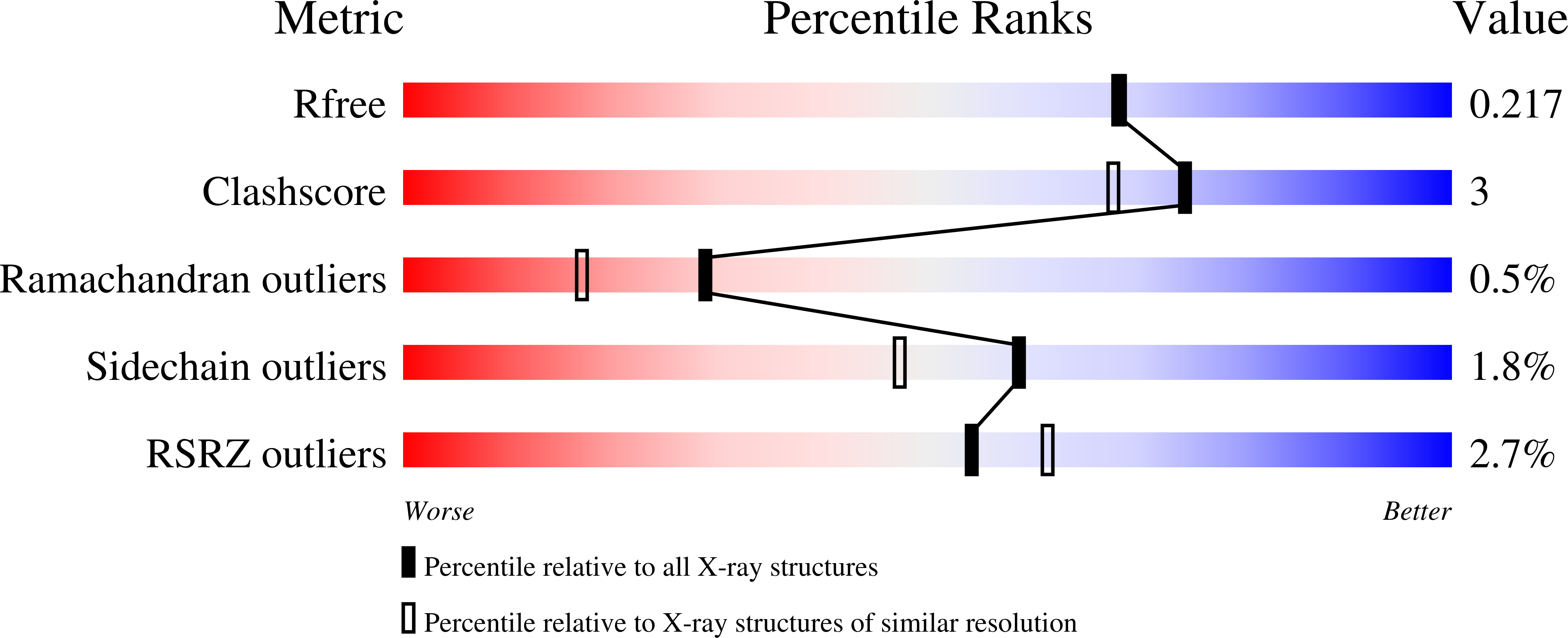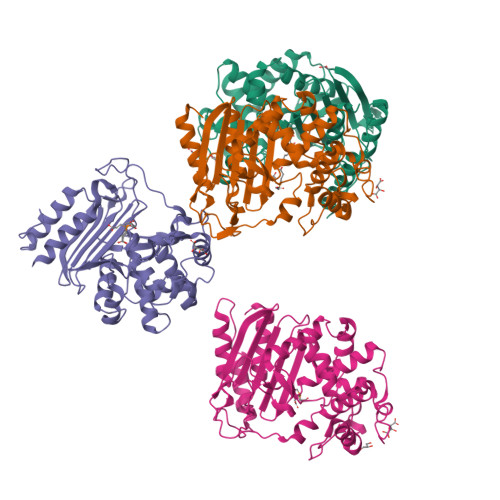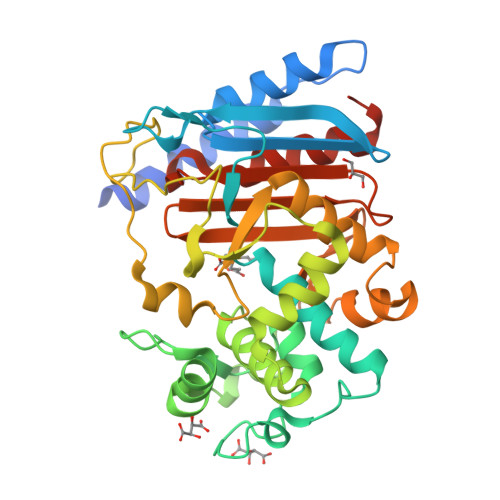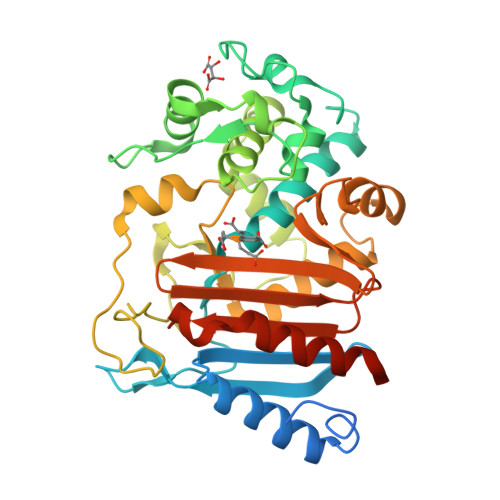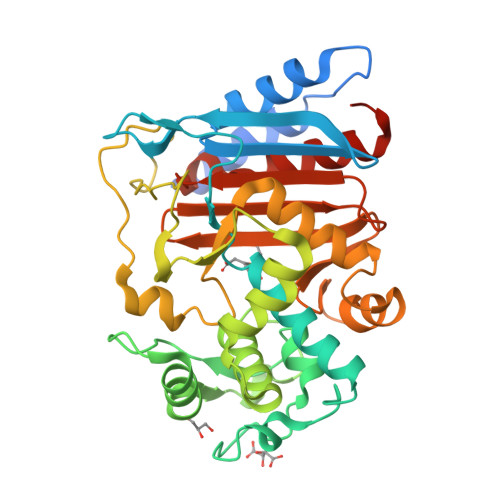Structure-function analysis of Lactiplantibacillus plantarum DltE& reveals D-alanylated lipoteichoic acids as direct cues supporting Drosophila juvenile growth.
Nikolopoulos, N., Matos, R., Ravaud, S., Courtin, P., Akherraz, H., Palussiere, S., Gueguen-Chaignon, V., Salomon-Mallet, M., Guillot, A., Guerardel, Y., Chapot-Chartier, M.P., Grangeasse, C., Leulier, F.(2023) Elife 12
- PubMed: 37042660
- DOI: https://doi.org/10.7554/eLife.84669
- Primary Citation of Related Structures:
8AGR, 8AIK, 8AJI, 8AKH - PubMed Abstract:
Metazoans establish mutually beneficial interactions with their resident microorganisms. However, our understanding of the microbial cues contributing to host physiology remains elusive. Previously, we identified a bacterial machinery encoded by the dlt operon involved in Drosophila melanogaster 's juvenile growth promotion by Lactiplantibacillus plantarum . Here, using crystallography combined with biochemical and cellular approaches, we investigate the physiological role of an uncharacterized protein (DltE) encoded by this operon. We show that lipoteichoic acids (LTAs) but not wall teichoic acids are D-alanylated in Lactiplantibacillus plantarum NC8 cell envelope and demonstrate that DltE is a D-Ala carboxyesterase removing D-Ala from LTA. Using the mutualistic association of L. plantarum NC8 and Drosophila melanogaster as a symbiosis model, we establish that D-alanylated LTAs (D-Ala-LTAs) are direct cues supporting intestinal peptidase expression and juvenile growth in Drosophila . Our results pave the way to probing the contribution of D-Ala-LTAs to host physiology in other symbiotic models.
Organizational Affiliation:
Molecular Microbiology and Structural Biochemistry, CNRS UMR 5086, Université Claude Bernard Lyon 1, Lyon, France.







